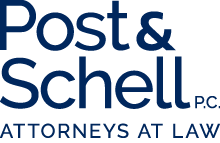NLRB’s New Rule Expanding Joint Employer Status: Impacts and Recommendations for Employers

The National Labor Relations Board (“NLRB”) recently issued a final rule for determining “Joint Employer Status” under the National Labor Relations Act (“NLRA”). The final rule was published in the Federal Register on October 27, 2023, and builds on the NLRB’s decision in Browning-Ferris Industries of California, Inc., d/b/a BFI Newberry Island Recyclery, 362 NLRB 1599 (2015).
In the Browning-Ferris decision, the NLRB eliminated the long-standing requirement that an entity must exercise direct control in order to be considered a joint employer responsible for labor and employment matters under the NLRA. The NLRB changed course again in 2020 with a rule that required an entity to possess and exercise substantial, direct, and immediate control over the employment in order to be considered a joint employer.
The 2020 rule is currently in effect and is set to be replaced with the NLRB’s new requirements when the final rule becomes effective on December 26, 2023.
The New Standard for Determining Joint Employer Status
The final rule expands potential liability for unfair labor practices under the NLRA by establishing a new standard for determining whether two employers are joint employers. Under the final rule, entities may be considered joint employers if they “share or codetermine” employees’ essential terms and conditions of employment. The final rule considers the joint employers’ authority to control essential terms and conditions of employment regardless of whether such control is exercised and without regard to whether such control is direct or indirect. According to the final rule, the “essential terms and conditions of employment” include wages, benefits, hours of work, scheduling, assignment of duties, supervision, work rules, discipline, hiring, discharge, and working conditions.
Impacts of the New Rule on Employers
The final rule significantly lowers the threshold for two entities to be considered joint employers under the NLRA. As a result, employers who regularly contract with third-party service providers, such as staffing agencies, subcontractors, and other vendors, are at increased risk of being held responsible for the unlawful labor practices of those service providers. The new rule is also expected to impact franchise relationships.
The final rule also requires joint employers to bargain collectively with employee representatives concerning any term or condition of employment that the joint employer has the authority to control. Under the new rule, employers who contract with third-party service providers may face bargaining demands from labor unions representing the employees of those service providers.
Recommendations for Employers
The new rule takes effect on December 26, 2023.
While the new rule will likely face legal challenges, employers should begin preparing now for the new rule to take effect.
Third-party services and staffing contracts play an important role in many businesses. These arrangements can provide the specialized skills needed to operate an employer’s business efficiently and cost-effectively. Employers should examine how they use third-party services in relation to the new standard to determine whether they could be considered a joint employer. Any contract in which an employer reserves the right to control an essential term or condition of employment will likely result in a joint employer relationship under the new rule. Employers should evaluate whether any third-party service contracts should be modified or restructured to avoid a joint employment relationship.
Employers should also review the practices of managers and supervisors to ensure that they are not exercising control over a service provider’s employees.
Disclaimer: This post does not offer specific legal advice, nor does it create an attorney-client relationship. You should not reach any legal conclusions based on the information contained in this post without first seeking the advice of counsel.

